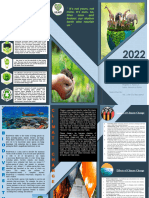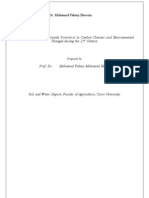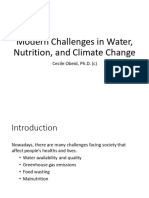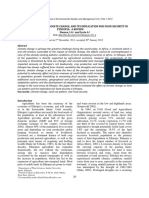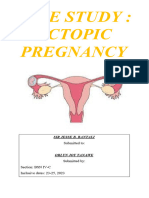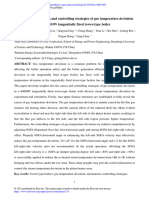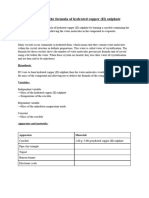0% found this document useful (0 votes)
23 views6 pagesClimate Change
Climate change poses a significant threat to Egypt, impacting its economy, productivity, and environmental stability through rising temperatures, droughts, and flooding. Key contributors to climate change in Egypt include urbanization, reliance on fossil fuels, and deforestation, with severe consequences for water resources and public health. The country faces a growing gap between water demand and availability, exacerbated by climate-related challenges.
Uploaded by
mahmoud.1024124Copyright
© © All Rights Reserved
We take content rights seriously. If you suspect this is your content, claim it here.
Available Formats
Download as DOCX, PDF, TXT or read online on Scribd
0% found this document useful (0 votes)
23 views6 pagesClimate Change
Climate change poses a significant threat to Egypt, impacting its economy, productivity, and environmental stability through rising temperatures, droughts, and flooding. Key contributors to climate change in Egypt include urbanization, reliance on fossil fuels, and deforestation, with severe consequences for water resources and public health. The country faces a growing gap between water demand and availability, exacerbated by climate-related challenges.
Uploaded by
mahmoud.1024124Copyright
© © All Rights Reserved
We take content rights seriously. If you suspect this is your content, claim it here.
Available Formats
Download as DOCX, PDF, TXT or read online on Scribd
/ 6


























